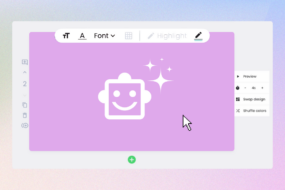
Communication and Design
Communication itself is constantly evolving and in this 3rd part of The Art of Video Storytelling, we enter into the most important aspects of a great video – Communication and Design.
The most valuable video content is meaningful and memorable. Excellent video content imparts knowledge that can improve our lives. Great video content can change our perspective and leaves us thinking.
Unlike filmmaking, we don’t have actors or studios. Yet, somehow, we have to get our point across. It all comes down to the communication of concepts and ideas. There are three essential methods through which you can get your thoughts on screen.
1 – Be Precise and Strategic With Text
Never underestimate the power of language! It may be counterintuitive to think of text as a storytelling mechanism, but many leading brands use plenty of text in their videos.
Although a voiceover or captions often accompany videos, the text is a key component that helps you communicate. A good tip is to write a video storyline the same way you would write for a blog post. When writing for video, it’s essential to be concise and precise with your language. Each scene has limited space and is displayed for a limited time. Every word has to serve a purpose.
When it comes to using text in the video, less is more. Half of what makes a great writer is the skill of writing. The other half is possessing the skill of deleting.
2 – Use Media to Bring Your Text to Life
For one-minute videos, there’s no need to capture live-action footage with actors, but we can still leverage the fascinating world of stock media. With massive suppliers such as Shutterstock and Getty, there are countless media files out there to help you tell all kinds of stories.
Imagine learning about coffee with background footage of coffee beans in a roaster. Media can also be a short clip of someone speaking about the topic. Good media selection shouldn’t hog all the attention. Instead, effective media should serve to set the ambiance, giving space for the viewer to absorb the key messages.
3 – Use Illustrations to Bring Your Content Alive
The most engaging content is often informative and educational, which means that we have to communicate something conceptual and commonly intangible.
Stock media can be a poor fit for intangible ideas such as talking about the economy or cybersecurity. Icons, illustrations, graphs, and charts can come in handy instead. Even if graphical elements are not used to describe the concepts themselves, they can still be used as subtle moving elements around the scene to sustain visual interests.
With these tips, you should now be ready to captivate your audience with engaging video content.
When making your next video, be deliberate about your structure, engagement, and communication.
For the structure, develop a strong hook, deliver on the promise with meaningful body content, and always try to give it a good ending.
As for engagement, think about how you can align the style, pacing, and sound with the mood of the message you’re conveying.
Last but not least, you want to make sure the video communicates well, which can be accomplished through a healthy balance of text, media files, and illustrations.
Something to try: Taking a blog post, try to cut down the words in half while maintaining the purpose and structure of the post with a beginning, middle, and end. This shortened copy is a great script to drop into Lumen5 to create your video. With sound, pacing, and style in mind, you’ll wrap up with an engaging video, repurposed from a blog.
Share your thoughts with us! We’d love to hear from you.
Ready? Action!










